Photo
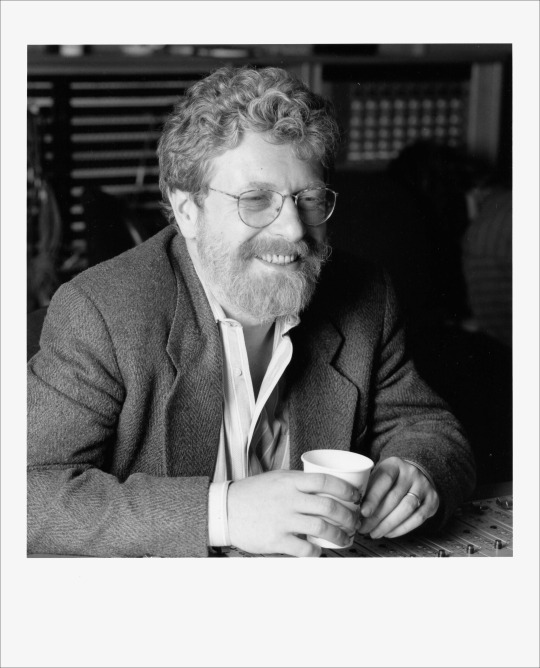
Michael Cuscuna, photograph by Jimmy Katz
Michael Cuscuna
Michael Cuscuna, one of my great inspirations and sometime collaborator, passed away this weekend (April 19, 2024) from cancer. Being a cancer survivor last year myself, when someone I’ve known and worked with for over 50 years it hit particularly hard.

Blue Cuscuna: 1999 promotional sampler from Toshiba-EMI [Japan]
Michael has been the most consequential jazz record producer of the past half century, a man who had not only a passion, but the relentlessness necessary to will the entire history of the music into being. Don’t believe it? Check out the more than 2600 (!) of his credits on Discogs. Substantial and meaningful he might have been, but to me, he was a slightly older friend who was always there with a helping hand. Hopefully, I was able to hand something back on occasion.
As I said when he answered “7 Questions” eight years ago: “I first encountered Michael as a college listener to his “freeform,” major station, radio show in New York, and was fanboy’d out when a mutual friend introduced us at [an] open rehearsal for [Carla Bley’s and Michael Mantler’s] Jazz Composer’s Orchestra at The Public Theater (MC has a photographic memory: “It was Roswell [Rudd]’s piece or Grachan [Moncur III]’s. You were darting nervously around the chairs with your uniform of the time – denim jean jacket, forgettable shirt and jeans.”) By 1972 or 73, he’d joined Atlantic Records as a producer, and since that was my career aspiration, I’d give him a call every once in awhile. He’d patiently always make time for my rambling and inane questions, and I never forgot his kindness to a drifting, unfocused, fellow traveler.
“...patiently always make time for my rambling and inane questions...” says a lot about Michael. His raspy voice could sometimes seem brusque, but ask anyone and they will tell you that he always made time to talk. Especially about jazz.
I desperately wanted to be a record producer and Michael was one of the first professionals I encountered. He had already produced my favorite Bonnie Raitt LP when somehow or other I bullied my way into his Atlantic Records office, where he was a mentee of the legendary Joel Dorn. Over the next few years, Michael was often amused at some of the creative decisions I made, but he was always supportive and even would sometimes ask me to make a gig when he couldn’t. When I spent a year living in LA, he invited me over to the studio while he was mining the history of Blue Note Records that would define his life for the next half century. I completely failed to understand what the great service to American culture he was about to unleash. Along with Blue Note executive Charlie Lourie, Michael’s research resulted in a series of double albums (”two-fers” in 70s speak), but little did the world know what was on Michael’s and Charlie’s minds.

The Cuscuna/Lourie Blue Note “Two-Fers” that ignited Mosaic Records
“I don’t think it’s generally understood just how imperiled the musical and visual archives of Blue Note Records were at one point, and just how heroically Michael stepped in to make sure this unparalleled American music survived for future generations. If you like jazz, you owe the man.” –Evan Haga
(Joe Maita does a great interview about Michael's career here.)
Fast forward a few years. The air went out of my record producing tires, I became the first creative director of MTV, I quit MTV and along with my partner Alan Goodman started the world’s first media “branding” agency. Leafing through DownBeat one day I saw an ad that started a new relationship with Michael that would last, on one level or another, for the rest of his life: the “mail order” jazz reissue label Mosaic Records.

Charlie Lourie & Michael Cuscuna at Mt. Fuji Jazz Festival, Japan 1987. Photograph by Gary Vercelli / CapRadio Music
Long story short, in 1982 Michael returned my check for the first two Mosaic releases with a note asking for some help. Initially, Mosaic wasn’t the sure fire, instant success Michael and Charlie had hoped for, did I have any ideas? I did, but no time to do anything other than make suggestions, we were busy trying to get our own shop off the ground. This cycle repeated itself for another couple of years when this time when Michael called he said Mosaic was on death’s door. Fred/Alan was in better shape, so Alan and I, on our summer vacation, came up with the first Mosaic “brochure,” convinced the guys we knew what we were doing (I’d read a few paragraphs in a direct mail book in a bookstore) and, with nothing to lose, Charlie and Michael took the plunge with us. Success! 42 years later, the former Fred/Alan and Frederator CFO at the helm, Alan and I always answer any call from Mosaic.

The first Mosaic Record box set 1983
There aren’t many people in the world like Michael Cuscuna. The world’s culture will miss him. I will miss him. Most of all, of course, his wife and children will miss him.
youtube
#Michael Cuscuna#Mosaic Records#Alan Goodman#Blue Note Records#RIP#Carla Bley#Michael Mantler#Jazz Composer's Orchestra#producing Records#producingrecords#jazz#mentors
4 notes
·
View notes
Photo

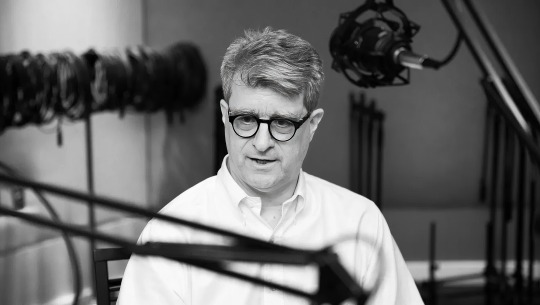


Behold, the king of online cartoons
Ex-Hanna-Barbera whiz Fred Seibert blazing a trail with YouTube network
A couple of times over the years, then-USA Today’s entertainment and tech reporter (and photographer) Jefferson Graham was nice enough to feature me in an article about the cartoons I was producing. First time was in the late 90s with “Oh Yeah! Cartoons,” but in 2015, with streaming video finally reaching the mainstream press (Channel Frederator actually started in 2005) and Graham’s animator son joining our network, he revisited.
Thanks to animator Michael Hilliger, who sent over his copy of the article in 2024.
By Jefferson Graham USA Today July 17, 2015
LOS ANGELES — Fred Seibert wants you to have his card.
And his phone number. He even won't mind if we print his [email protected] e-mail address right here in USA TODAY.
Seibert, 63 is the online toon king, with 400 million views monthly to his Channel Frederator network on YouTube, but he's never sure where his next hit will come from.
So he's always out there looking, at schools, industry gatherings, book signings. You name it.
Next weekend, he'll be at the Vidcon convention near Los Angeles, a gathering of folks who make their living off YouTube, which is where most folks see his online `toons.
"I have no ideas," he says. "But I recognize talent."
That's for sure. Seibert, then president of Hanna-Barbera's cartoon studios in the 1990s, is credited with discovering Seth MacFarlane, the creator of the Family Guy, fresh from college, when he hired him to work on Hanna-Barbera cartoons.
For Seibert's "What a Cartoon!" series for the Cartoon Network, Seibert hit ratings gold, signing up the creators who churned out hits like "The Powerpuff Girls," "Dexter's Laboratory" and "Johnny Bravo." Their series debuted as shorts for first for Seibert's series.
He still serves as executive producer of "The Fairly OddParents," a TV series he began producing in 1998 when it debuted on his "Oh Yeah, Cartoons," series. It's been running ever since on Nickelodeon.
Seibert's biggest audiences, however, have come from online, to the tune of some 1.9 billion views for 'toons like the Bee and PuppyCat and Bravest Warriors.
We had Seibert as a guest on our #TalkingTech podcast in June. At the time, he was averaging 300 million monthly viewers to the Channel Frederator network. Now he's already up to 400 million monthly viewers, and predicts he'll top 700 million by year's end, and 1 billion by 2016.
The reason for the massive growth is that unlike before, when animation was targeted just to young kids, either for Saturday morning TV, and kid-based cartoon TV channels, anyone of all ages can view `toons online.
Seibert's Cartoon Hangover, a Frederator section where he shows the best of his `toons, bills itself as the channel for "cartoons that are too weird, wild, and crazy for television."
“Bee and PuppyCat,” about a young woman with a hybrid dog-cat, is written by Natasha Allegri, a woman in her 20s, about a character in her 20s, and thus, obviously not targeted to the traditional animation crowd.
"No matter what your interest online — whether it be anime, or science fiction or comedy cartoons, there is a place for you," Seibert says. "TV has a tough time supporting the sub-genres. Online is all about sub-genre."
Channel Frederator is what's known as a multi-channel network. Cartoons run on YouTube, but his network promotes them, sells ads and distributes the proceeds to some 2,000 of his video makers.
Through Frederator, the channel makers learn about which color to make their thumbnails to find larger YouTube audiences (he recommends yellow) and which keywords to use in the descriptions ("funny" always works, he says.)
"We give them the tools to grow their performance," he says.
Dominic Panganiban, a 24-year-old animator from Toronto, joined the Frederator network in November, and has seen his subscriber base grow ten times since.
He had been working with Full Screen, another multi-channel network that works with YouTube creators to help them monetize their videos and attract larger audiences.
"Frederator was a better fit, because they cater more towards animation channels," Panganiban says. Because Frederator attracts folks who enjoy cartoons, "I have more potential here."
By being part of the Frederator network, Australian animator Sam Green says he's learned about how to better promote his cartoons, and gotten access to a database of free music and sound effects to use in his cartoons.
He too has seen a spike in traffic.
Being with Seibert "helped me move from my mother's garage to affording my own apartment in the big city," he says.
How did the traffic for both creators go up so dramatically?
Seibert promoted the cartoons to his audience. With 2,000 cartoon makers, that's a lot to choose from. He says he'll plug as many of them as "show an interest" to growing their audience. He looks for people who post new work regularly, stay in touch, and ask "what we can do to help them more."
And despite the massive online audience, Seibert isn't making money yet, and doesn't think he will for another three years.
"Our cartoons are 3-4 minutes long, and the average American watches 6 hours of TV a day," he says. "We have a long way to go to even that out."
Photography by Jefferson Graham, July 2015
9 notes
·
View notes
Photo

New Music Distribution Catalog 1986, cover painted by Keith Haring
Working for the New Music Distribution Service
New York City 1974-1975
My time working for Carla Bley and Michael Mantler was one of the clear highlights of my early working life. From crashing one of Carla’s earliest recording sessions to working at the New Music Distribution Service to being the sole road crew member for Carla’s first touring bands, there couldn’t have been a better set of experiences for a young, music obsessed, media obsessed young person.
Given that I’d started a record company that recorded some jazz, NMDS was distributing one of our albums, so I would hang at their first office, at the time run by one of my former WKCR-FM mates (KCR was to be a through line for the joint for several years, proven by the 1986 dedication to the late Taylor Storer another radio station alum). When he left, he suggested I might be a replacement, and lucky for me, Mike and Carla agreed.
There was nothing, before or after, like NMDS. Initially, it was a desperate, brilliant lifeline for two distinctly unique, non-mainstream composers (non-mainstream for virtually any or every genre; Carla and Mike might have been seemed like they belonged to ���jazz,” but their music only tangentially touched upon it, due to many of the musicians they performed/recorded with). Their first two multi-LP albums had a really rough time finding retailers willing to stock them next to rock, even classical and jazz records clogging their racks, so their audacious plan to co-distribute with 10 other misfit labels in Europe (Incus, FMP, ECM, Futura, Virgin, among others) seemed like the only hope.
By the time I came aboard around 1974, the service had already expanded enough that we were carrying not only independent jazz, but classical, electronic, even the beginning of what could be avant-rock. The Philip Glass Chatham Square Production LPs would be among the most well known, but it was Manfred Eicher’s ECM from Munich which would lead to the most consequential philosophies of the non-profit, and ultimately for Carla’s and Mike’s personal productions.
As I arrived, ECM was already the most popular label we stocked. Everything from their first album (Mal Waldron’s “Free at Last”) were finding airplay, and subsequent sales, but it was the double whammy of Keith Jarrett and Chick Corea that almost literally blew the doors off. They each had solo albums that were taking off, but against the grain of the free jazz 1970s, Chick’s first “Return to Forever” LP, a light, beautiful, bossa nova flavored confection (as opposed to his heavy fusion version that it would morph into) had become, in indie jazz terms, a massive hit. From my first day, enormous amounts of time and energy of the two of us, the only NMDS full time employees, was spent taking orders, boxing them up, invoicing, and getting paid for those records. Too much time, it turned out.
“Stop!” cried Carla.
Because, in addition to ECM, NMDS was also handling tiny, artist produced labels –our raison d’etre, after all– some of which only sold one LP a year. WE were suggesting dropping to low selling items, we could only handle so much with ECM volume just increasing day after day.
Carla then made a decree. She and Mike would call Manfred and tell him it was time he found another, larger distributor (he did, with enough success that 50 years later, ECM still commands major company record distribution). And, we would positively, absolutely not, never, no way, drop any label that sold at least one album a year. NMDS was in the business of supporting artists that no one else would.
“No one would ever take our [Carla’s and Mike’s] records. That’s why we started NMDS to begin with, it’s why we exist!” And, that was that.
Not for nothing, when NMDS folded in 1990, Manfred Eicher, who had for decades proven his loyalty to his artists, proved it once again to his most devoted American based friends. Carla Bley’s entire discography, and Michael Mantler’s life’s work, continues to be distributed worldwide by ECM.
Anyhow, working at NMDS and with Mike and Carla proved to be more than a merely formative experience for me. It gave me a grounding in everything from record production to the record business to, eventually, the media business. I had a great time learning from and working beside two world class artists, and world class people.
.....
As to this particular catalog, one of two visual artists who mean the most to me is Keith Haring. I’ve been on a jag of searching about him lately, and I had completely forgotten that our paths crossed virtually at NMDS.
More importantly, flip through the catalog, and you’ll see proof of what Greg Tate says in his notes: “I tend to think of each year’s New Music Distribution Service catalogue as a kind of musical version of the hitchhiker’s guide to the galaxy, with every entry registering like a report from some far flung orbital station.“
.....
[Transciption of the notes from the 1986 New Music Distribution Catalog]
TAYLOR STORER 1956-1985 This catalog is dedicated in loving memory of Taylor Storer, who was not only a co-worker but a fine friend to all of us and, perhaps more importantly, to the music.

FOREWORDS by Gregory Tate
Some folk probably just think of the New Music Distribution Service catalogue as this encyclopedic warehouse stocked with mostly independently recorded jazz and contemporary Euro- American classical music. The more savvy perhaps see it as a networking resource for producers, performers and composers of experimental music.
But for reasons that will probably perplex no one I tend to think of each year’s New Music Distribution Service catalogue as a kind of musical version of the hitchhiker’s guide to the galaxy, with every entry registering like a report from some far flung orbital station. Flipping through its pages can provoke goose pimples of the order of those brought to flesh when Carl Sagan drones on about how many billions upon billions of star systems there are out there and that no, we are not alone.
If you’re a music lover of eclectic and exotic listening habits you’ll find consolation in this catalogue and a kind of communion with others the Master Programmer also gave extrater- restrial ear lobes to.
For the most part much of the music in the NMDS catalogue defies ready categorization, tending to be defined by the genre rubrics they subvert rather than those they deploy. (It is of course for this reason that the recording of much of this music would only have been under- taken by independent labels run by guerilla-minded entrepreneurs—though the independents who rely on NMDS as an outlet actually function as some of the last spokesmen for free- enterprise late modern capitalism will see.) This is not to say that there’s not also a whole lot of sound contained within that could not be easily filed under such headings as neo-post-bop, maximal minimalism, punk-funk, post-modern opera or even that perennial favorite, classical fusion boogie. What it is to say is that since my own musical tastes run to the polymorphous, most of my choice selections from NMDS catalogues past and present run likewise. Take for example Cecil Taylor’s Garden or really any of his solo recordings where he bridges the gap between Brahms and the blues in but a few lyrical strokes and defies anyone to delimit him to a free-jazz gunslinger type. Or take a listen to Jeffrey Lohn’s “Dirge” a requiem for assassinated South African activist Steve Biko, which is not only of the most aptly horrific pieces of program- matic music ever recorded but one which parodies rock’s roots in African ritual in the same bars it lampoons heavy metals kinship with the music of fascist rallies.
Taking an opposing tack would be the pan-ethnic confabs of Kip Hanrahan whose directorial flair for making collaborators out of as disparate as those of Cuban Yoruba drummers and Manhattan art-rockers creates a new definition of the term ‘cosmopolitan’. By the same token you will hear in a piece like Daniel Lentz’ “Lascaux” scored for and performed on 24 wine glasses of varying liquid constituency, a playfully minimal evocation of a host of ambient musics old and new, meaning just about everything from Tibetan bells to Brian Eno.
Even if you never hear more than a fraction of the music available in this catalogue take it for what it is on its own merits: a trans-dimensional road map to the alternative music of the spheres. Not to mention, one of the funniest documents late post-modernism has yet produced. If not a source of sonic salvation as yet untapped by any known evangelical order. Get it while it’s heretical.
Published by the Jazz Composer’s Orchestra Association, Inc. 500 Broadway, New York, N.Y. 10012. Telephone (212) 925-2121
Original cover art by Keith Haring
INTRODUCTION TO THE NEW MUSIC DISTRIBUTION SERVICE
The New Music Distribution Service (NMDS) distributes all independently produced recordings of new music, regardless of commercial potential or personal taste. A wealth of new music is being created in the areas of jazz, classical, and rock, as well as outside of any clearly delineated experimental categories. Because of its generally uncommercial nature, this music has had minimal representation in the music industry. Independent record production and distribution may be the only way for musicians to maintain artistic and economic control of their work. In addition to the sale and promotion of their music, we advise musicians and producers about the recording and manufacturing phases of record-making. We deal with everyone equally, regard- less how much or how little the records sell. The music in this catalog is intended to be successful on its own musical merit, rather than on strictly commercial terms.
The New Music Distribution Service is a division of the Jazz Composer’s Orchestra Association, Inc., a not-for-profit organization chartered in New York in 1966. The Jazz Composer’s Orchestra began producing its own JCOA recordings as early as 1968. As an increasing number of musicians and composers in all fields started to explore independent record production, the problem of inadequate distribution became acutely apparent. In order to deal with the need for a distribution outlet for its own records, as well as for all new jazz and new music, the New Music Distribution Service was established in 1972. Initially, 98 records on 17 small labels from. the United States and Europe were handled, with services being exchanged on an international basis. However, during the next few years the unprecedented growth of domestic independent record companies necessitated exclusive concentration on the problem as a national one, and ties with foreign labels were dropped. Now, the demand for service is such that over 2000 records on 360 labels are being distributed. This growth does not appear to be slowing down. It continually becomes more obvious that independent record production is the only way for most of these musicians and composers to issue their music. As the only organization in the field, NMDS continues to provide and improve this vital and unique service to the creators and the audience of new music.
NMDS sells records to individuals by mail order and to record stores across the country. We regard the mail order portion of our business as the most vital, because this allows you to select what you want from the entire catalog. By doing so you directly support our efforts to keep this creative music available. Our aim is to provide you with a rich variety of music. For those of you to whom this music is totally unfamiliar, we have provided an introduction to NMDS record- ings, which may help you become acquainted with these new sounds. For the record store this catalog represents a strong alternative to the monopolistic practices of the commercial ‘music industry’. These records may give the store the edge that distinguishes it from just another record store.
The descriptions in this catalog are not intended to be definitive, but rather to guide you. Each of our catalogs is larger and more diverse than the previous one, reflecting the continuing commitment of the music community to independent record production. Beginning with this edition, we have also instituted an attempt, however futile and elusive it may seem, of listing artists by style of music. Because of the inherent problems of trying to categorize them, many of our artists can be found in more than one category. We hope that this will enable you not only to find the composers and musicians you are looking for, but also to discover others working in the same genre.
As a non-profit organization, we are counting on your support. You can help ensure the survival of creative new music on records not only through your purchases, but also through your tax-deductible contributions. You may now become a Friend of NMDS for $25.00 per year, for which you will automatically receive our quarterly New Release Listings, and we will also ship your orders at our expense. This offer applies only to orders of more than one record shipped in the continental U.S. If you are able to contribute more, you will receive the above privileges, plus a signed copy of Laurie Anderson’s first Single (for $75), or a signed and numbered copy of a boxed three-record set of the John Cage Town Hall 25-Year Retrospective Concert (for $150).
This catalog has been prepared with significant support and encouragement from the New York State Council on the Arts, the National Endowment for the Arts, the Robert Sterling Clark Foundation, and many generous individuals.
#New Music Distribution Service#1974#1986#NMDS#Carla Bley#Michael Mantler#Keith Haring#Greg Tate#Taylor Storer#jazz#producingrecords#catalog#non-profit
4 notes
·
View notes
Photo

This 1994 article in Broadcasting+Cable, a trade magazine, is the only one I can think of that covers the entire sweep of my media career. That is, up through the first phase of producing cartoons. But, the writer (unidentified, sorry) touches on my independent record production era, the promotion and branding work at MTV, the branding company Alan Goodman and I started to work with Nickelodeon and MTV, and then, Hanna-Barbera Cartoons. It’s before the internet age, of course, so no MTV Networks Online, Next New Networks or Frederator Networks.
Thanks go to Hanna-Barbera’s head of public relations, Richard Lewis, who thought Fifth Estate could be suckered into profiling a polymath.
Broadcasting + Cable Magazine
June 27, 1994
Fifth Estater: Fred Seibert
Fred Seibert's rise from cutting jazz albums on the cheap to the presidency of children's television powerhouse Hanna-Barbera Inc. is evidence that guts and a willingness to challenge assumptions can pay off.
But Seibert faces a challenge large enough for even his high standards: returning once-dominant cartoon factory Hanna-Barbera to its former glory under new owner Turner Broadcasting Systems.
A musical background (piano, flute and accordion) and the lure of free records led Seibert, a student at Columbia University to join the campus radio station, WKCR-FM, in 1969. Seibert spent the next four years as disk jockey, writer, producer and working "nearly every other job" at the station. Then Seibert set up his own jazz and blues label, Oblivion Records, out of the station's back office.
Finding the label more interesting than his history and chemistry studies, he left Columbia before graduating and devoted his energies to producing records.
However, Seibert acts such as Mississippi Fred McDowell, Cecil Taylor and Hank Jones (who was nominated for a Grammy for one Seibert-produced album) never hit a chord with the masses. Seibert served as a tour and sound manager with a jazz orchestra to support himself.
Fortunately for an impoverished Seibert, a guardian angel intervened. Dale Pon, vice president of creative services, Storer Radio group, was pleased with Seibert's work as a freelance radio engineer and persuaded him to join the company in 1978 as a promotion assistant, first in Los Angeles and then back in New York.
Two years later, in 1980, Pon recommended Seibert for the position of promotion manager with the nascent Movie Channel premium cable service, then owned by American Express and Warner Communications.
A year later, when The Movie Channel launched a novel music cable channel called MTV, Seibert found himself in the catbird seat as the only Movie Channel executive with a music background.
Once appointed to head MTV's on-air promotion effort, Seibert quickly realized the revolutionary potential of the channel and led a group that rewrote the rules of television promotion. Rather than promoting individual shows, Seibert and his team worked to establish the identity of the channel with such devices as the no-famous rotating “M” logo.
"Fred had taste,'' says his former boss, Bob Pittman, who was vice president of programming at The Movie Channel and now chairman of Time Warner’s Six Flags Magic Mountain theme park division. “He was on the cut-ting edge of where things were before we got there. He went against conventional wisdom… That was important because we had no money: originality was all we had.”
President, Hanna-Barbera, Inc., Los Angeles; born September 15, 1951, New York; attended Columbia University, New York; producer/disc jockey/writer, WKCR-FM, New York 1969-73; self-employed record producer and tour manager, 1973-78; advertising and promotion assistant, later manager, Storer Radio, Los Angeles, New York, 1978-80; promotion manager, The Movie Channel, New York, 1980; vice president, promotion and production, Movie Channel and MTV, 1981-83; co-owner, Fred/Alan, Inc., New York, 1983-92; current position since February 1992.
Then, in 1983, as vice president of creative services for Warner-Amex, now MTV Networks– Seibert abruptly quit after finding his job increasingly support oriented and less entrepreneurial. He also was disappointed that he had not been rewarded for his role in launching the rapidly expanding music channel.
Seibert and MTV creative director Alan Goodman –now Seibert’s brother-in-law– formed Fred/Alan, a programming and marketing consulting firm for radio, television and cable.
After MTV's wrath at the pair's departure subsided, Seibert and Goodman designed a promotional campaign that helped fledgling children's network Nickelodeon, owned by MTV, move from dead last among cable networks to first place in six months, again by stressing network identity over individual programs. The pair also helped create and promote the Nick at Nite sitcom block.
Finding that the success of the agency was forcing them into more mundane activities, the partners decided to dissolve the business in February 1992. A day after leaving, Turner Entertainment President Scott Sassa called and offered Seibert the presidency of Turner's recently acquired Hanna-Barbera studio.
Now, Seibert is stoking the creative engines at the company. The studio is implementing a six-year plan to promote a different group of its classic characters each year, beginning with The Flintstones this year.
Next year it will be '60s series The Adventures of Jonny Quest. Efforts include producing a live-action feature film based on the series, a two-hour animated movie for Turner Network Television and a new animated Jonny Quest show for syndication in fall 1996. The division also will begin regular production of animated feature films.
The company also has stepped up production of syndicated projects by launching weekly this season, 2 Stupid Dogs and SWAT Kats, both distributed by Turner Program Services.
The company in October began producing 48 shorts for Turner's Cartoon Network, designed to entice top cartoon producers to experiment with radical new cartoon concepts in flexible seven-minute segments. "If you attract the top talent, you will get the hits and the money will follow," Seibert says. -DT
#press#Hanna-Barbera#MTV#Oblivion Records#Produced by FS#WASEC#The Movie Channel#Nickelodeon#Fred/Alan#Dale Pon#Bob Pittman#1994
4 notes
·
View notes
Photo

Build it and they will come? Baloney!
Before I made cartoons, but after I’d abandoned the record business, I worked for radio stations (primarily WHN, New York) and cable television networks.(most notably with MTV and Nickelodeon).
My jobs? My jobs had nothing to do with picking records to be played or hiring DJs, or making shows or deciding when to program shows. The sole mission for my employers/clients was to attract audiences to our offerings.
It seems to me that there’s a common misapprehension that “build it and they will come” is how media works. Play the right records, make the right shows, and you’ll be popular. Baloney.
I’ve written a number of posts as to how we did built our brands and audiences. It’s my frustration with the abandonment of those crafts in the age of streaming that’s caused me to highlight things in this short post.
3 notes
·
View notes
Photo

Albie Hecht at Fred/Alan, NY, circa 1988.
PS Albie.
I forgot a great story in my post about Albie Hecht.
Alan Goodman, Albie and I met while we were students at Columbia in New York. The fact that we all put our time in at the college radio station was the first indication that we were all media obsessed. I never left the station, never went to class, so I didn’t graduate. It took me several years to work out how to get into the game. Alan went to every class, did his work-study duties, graduated with honors and went on to film school and work in the business.
But Albie! He has a resourceful nature, and it was at work right then and there in college. Albie didn’t spend as much time as we did at the station, but was still working it. Like Alan, he was a good student, and at the same time he had friends in a band. He was their manager. Me? I had band friends too I wanted to help, but I had no idea how I could be of service. Albie? He went out into the world and hustled them, and himself, into a record that would provide them all an immediate entré into the then thriving record business.
But, he didn’t stop with that.
Columbia was a really conservative institution. Undergraduate studies were humanities, sciences, music (classical music), that kind of stuff. As film schools were sprouting all over the world, even 100 blocks south at NYU, it was only at Columbia’s graduate programs that had journalism, arts, film. Undergrad majors were limited to classics like English, history, math, physics, like that. Nothing wrong with it, but it didn’t scratch the itch that we had. Alan and I went along to get along. Albie had other plans.
Not satisfied with the ossification of his admittedly fantastic education, Albie wanted the school to formally acknowledge his interests. How? He argued, persuaded, cajoled –like he continues to do– all the way through the university administration. Finally, Albie had an audience with the highest authorities that had sway. He made his case.
The result? Albie Hecht has the only “Media Studies” undergraduate major Columbia University has ever granted!
It took me a long time to learn his lesson, but I’m thankful I learned.
2 notes
·
View notes
Audio
“We started out to make a record, and ended up with a band.” The saga of Dr. C. Or, the end of my fantasies of my pop recording career.
Well, not exactly. The appropriate quote should have been, “We started out to make a film, and ended up with a band.” And, in my case, pretty much the end of the idea that I would become a pop music producer.
My friend, partner and brother-in-law to be, Alan Goodman, was in film school at Columbia in New York, and sometime in 1976, one of his professors was making a short film. It was about... well, it doesn’t really matter. But the star, a character called “Dr. C”, was played by pianist/singer Rusty Cloud. The doctor had a soul band and we recorded a demo that Alan asked me to produce.
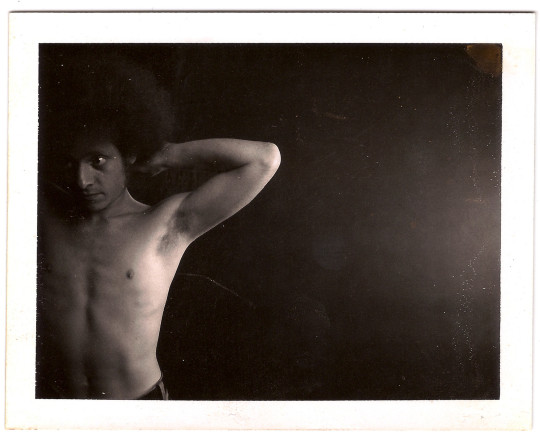
Rusty Cloud, circa 1976
I was more than eager. After a few years of recording blues and jazz musicians, I was eager for pop, my comfort zone. And soul? Yes! Rusty had written an original, the band –keyboards, bass, guitar, drums, saxophones and trumpet– was modeled after the classic Memphis powerhouse Stax Records. Rusty brought some guys, Alan and I did too (in fact, Alan played trumpet on the soundtrack).
The demo hit the right notes for me (pun intended) and right then and there we started thinking about making Dr. C a working band that might have a chance to be signed to a actual record company. My indie company, Oblivion Records, had just crashed and burned, and anyhow, I wanted to taste the real thing.

Dr. C, performing at "Home," upper East Side, Manhattan, New York, circa 1977 (L-R) Irv Waters, guitar; Cleveland Freeman, bass; Rusty Cloud, vocals & piano; unknown, trumpet; Jim Clouse, saxophone; Bruce Kapler, saxophone; David Longworth, drums
Long story short, we shuffled a few folks in the group, started playing “showcases” around town. Alan and I presaged the branding and advertising we’d do during the 80s and put together some hype materials.

Written by Alan Goodman, Designed by Mark Larson
And? Nothing. I couldn’t pull it off. At least, that’s how I looked at it. It wasn’t that we weren’t good enough, I thought, the band was great! So what if Rusty couldn’t really reach all his notes? We rocked. Soul music fronted by a white guy? Perfect! We just needed to hustle. And hustle more.
I was a decent producer. The material was decent. The hustle? In retrospect, it wasn’t me. At least the get-a-band-signed type of hustle wasn’t.
Dr. C quickly ran out of gas. My hopes for a pop recording career did too. I didn’t realize it at the time, but soon enough I was working in radio, then television, where I belonged.
1 note
·
View note
Photo
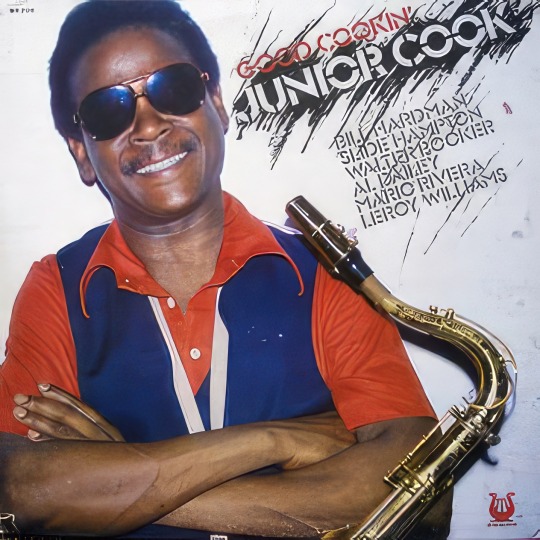
Junior Cook
Good Cookin’
Muse Records MR 5159
Produced by Fred Seibert
Recorded by Rudy Van Gelder
Junior Cook – tenor saxophone
Bill Hardman – trumpet, flugelhorn
Slide Hampton – trombone, arranger
Mario Rivera – baritone saxophone
Albert Dailey – piano
Walter Booker – bass
Leroy Williams – drums
Click here for my entire discography
3 notes
·
View notes
Photo

Huckleberry Hound for President
[Bumper sticker, Dell Comics 1960]
When The Huckleberry Hound Show debuted –in syndication, on local television stations- in 1958 I was 7 years old. And you would’ve thought it was two years earlier or six years later, when Elvis and The Beatles shook up the world.
I was enthralled, and honestly, it was probably one of the pivitol events in my cultural life. After all, 34 years later, I became the last president of Hanna-Barbera Cartoons.
Thanks to Carlton Clay and Bonnie Hanna for the gift of this bumper sticker.
6 notes
·
View notes
Text
“Best of Original Cartoons”
Best of Original Cartoons P... by Fred Seibert
When I left Frederator and set up FredFilms a few years ago I updated the Best of Frederator book we published. And then, I either did new editions or updates of all nine (as of now) of our promotional books. You can check them out as the ‘FredFilms Professional Library.’ Each of them is available as a downloadable PDF, or you can get hard copies at Amazon and Bookshop.
There are posters, cartoon sketches and full color artwork, jokes, some incredible graphics, and lots and lots of postcards. In the ‘Best of Original Cartoons,’ there’s some of each.
Hope you enjoy them.
#FredFilms#Frederator#posters#postcards#cartoons#title cards#FredFilms Professional Library#My Life as a Teenage Robot#ChalkZone#Fairly Oddparents#Adventure Time#Bee and PuppyCat#Costume Quest#Wow! Wow! Wubbzy!#books#Cartoon Hangover#Channel Frederator#MTV#Nickelodeon#book
7 notes
·
View notes
Photo

Photograph by Elena Seibert 1989
Albie Hecht.
It’s great when you can live through several lives with a true friend. That’s my story with Albie.
Albie Hecht is one of the most important television and film producers and creative forces of the past 30+ years. And, lucky me, he’s been one of the most important people in my personal and professional life for even longer. In fact, it’s safe to say that after my surprising turn into animation, which seemed like a temporary detour, without Albie, I probably would’ve/could’ve moved into other media areas instead of cartoons.
(In fact, at a meal we shared recently [August 2023] Albie asked me, during these chaotic times in the media industry, whether I was comfortable in the dark times. What I should have answered, but I didn’t, is, “I am. No small thanks to you.”)
Most importantly, Albie has proven himself to be the definition of a wonderful and steadfast friend.
My initial draft of this post went into excruciating and dull detail of the 50+ years we’ve known each other and how we bobbed and weaved in and out of each other’s lives. Instead, you’ll find a (still long, but edited) timeline of our common work lives.
But, it was a life lesson I got from Albie that sticks with me the most. My friend and 1980s partner, Alan Goodman, talked ourselves into a gig that was over our heads, producing a 24 hour live concert in Texas for Willie Nelson’s Farm Aid, which was our first foray into long form producing. After primarily doing short form promos and advertising, we’d jumped from the frying pan into the fire.
I decided we needed a producer who’d done such things before. We brought along our treasured companions, including Albie, to manage various pieces of the production. And wouldn’t you know it, the producer we picked was pretty much a bust. We got through the thing by the skin of our teeth.
Afterwards, Albie took the two of us to the woodshed.
“Why would you depend on someone you’d never worked with?! We’ve worked together forever, your friends are talented and would walk through fire for you!”
Albie taught me to never give up on the loyalty of friends. I’ve tried, not always successfully, to honor that devotion. I wasn’t as good at it as Mr. Hecht, but I really pray that I’m an OK junior partner in the enterprise.
This post could be as long as a novella, but I think I’ve hit the high points. In case I’ve missed something, let me lay out how we’ve crossed our professional lives more than a few times.
1970 Albie was dorm friends with Alan Goodman, my friend and to-be partner, brother-in-law and ex-brother-in-law. We all worked together in college radio.
1976 Lifesong Records was formed by the Jim Croce estate, his former producers and their attorney. Albie managed a band of some college friends that was signed to the label, and eventually they all had jobs there.
I was desperate for a gig in the music business, having produced several jazz and blues albums for, shall we say, below a living wage. I visited Albie, who informed me that he wished he was doing what I was doing, “sitting behind the recording console.” Needless to say, no job for me.
1980 I started working in television, at the company that would make me a co-founder of MTV. Alan asked me to have lunch with Albie, who was writing for music magazines, and who wanted a television gig. At this point, we knew each other, but I don’t think we actually understood each other. At that point, I returned the Lifesong favor and couldn’t help him get a job.
1986 Alan and I started a production/branding/consulting/advertising company and Albie did some work with us. He traveled with us to Texas where we produced the second Farm Aid concert festival for VH1, where he ran various production units creating interstitial material. And taught me an invaluable life lesson.
1988 Albie became our production partner, running Chauncey Street Productions, where we hoped (and succeeded!) in creating our first series and specials, including creating Nickelodeon’s Kids’ Choice Awards. He also helmed the Fred/Alan advertising agency commercial productions.
1992 We closed Fred/Alan. Albie “bought” Chauncey Street for $1. Alan wrote and produced TV shows, and consulted on branding for cable networks. I moved to Los Angeles and became the last president of Hanna-Barbera Cartoons.
Albie created a huge hit for Nickelodeon. They went on to hire him to run network production where he continued to create a multitude of hits for the network, live action and animation, and brought them into the movie business, where among other things, he produced the first non-Disney animated feature film to earn more than $100,000,000.
1996 Ted Turner sold his company, including Hanna-Barbera. While scrambling for my next gig, Albie, Herb Scannell, Judy McGrath and Tom Freston allowed me to start Frederator in January 1997 as an independent producer of cartoons, exclusively for Nickelodeon.
Albie was the greenlight for Frederator to produce four cartoon series, including our most long lived hit (which is being rebooted as CG animation right now).
2003 MTV Networks buys TNN (the Nashville Network) in 1999, and Albie becomes the founding president of Spike TV.
2007 Albie adapts Worldwide Biggies, his longtime production company, as a digital multiplatform media startup. With partners, I started a different venture backed digital video startup.
2013 Albie becomes the head of CNN’s HLN.
2023 Albie and I have continued to travel on some parallel paths through the years. We’re both producing TV series and movies.
Thanks Albie, I couldn’t be who I am without you.
I’ve posted often about my mentors, the people I’ve learned the most from. And I’ve noted how often how many of them beg to differ as to whether or not I should credit them as such. So, I’ve calmed down in my titling. But still…
3 notes
·
View notes
Photo
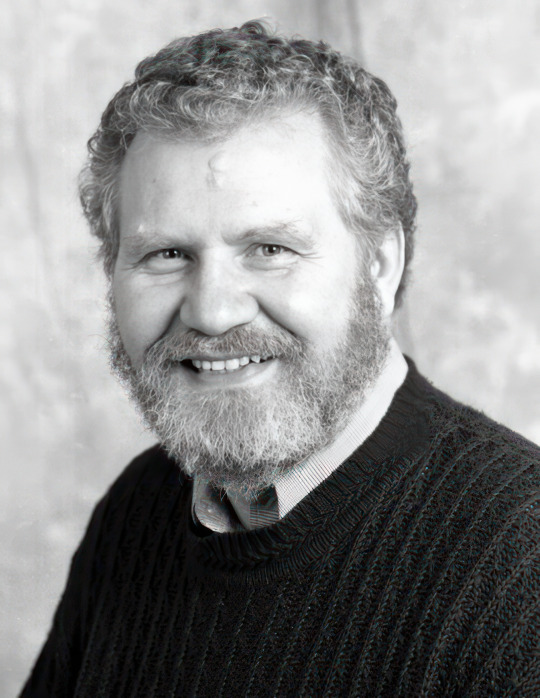
Larry Huber, official Oh Yeah! Cartoons portrait, 1998
Larry Huber.
Starting out in the cartoon business at 40 years old was pretty daunting. I had worked on some very short form animation in my previous lives, but cartoons? Completely different. Characters, layouts, storyboards, voice acting... A whole new world. When I first met with Hanna-Barbera’s senior staff –veterans all– I told them the truth.
“I watched, and loved, cartoons as a kid. I don’t know much about making them. But, the good news is that you do. So I’ll listen to you about what we ought to do.”
At least, I thought it was good news. But honestly, pretty much only Larry Huber stepped up to help. And he’s been stepping up in my cartoon life ever since.
Larry’s a complete pro. He came to Los Angeles and studio art and animation, started in the business in the early 70s. He knows everything about the actual making of cartoons, which is great. But, better yet, he’s got great judgement, and though he would like to convince some people that he’s a curmudgeon, he’s one of the most caring and generous professional a newby, or a professional, could have as a colleague.
And that’s what he’s been for me. Actually, and more importantly, it’s what Larry has been for dozens of folks who made short films and series at my productions. Starting as the supervising producer on What A Cartoon! (he even designed the opening titles), coming on as my co-executive producer on Oh Yeah! Cartoons and Random! Cartoons, and continuing to help filmmakers on individual shorts at Too Cool! Cartoons and GO! Cartoons, and series spin-offs like Bravest Warriors and Bee and PuppyCat.
Larry’s got the obvious skill set –art, animation, storyboarding, directing, producing– but, I have to say what’s always blown me away is his instinct for filmmaking story. Obviously, there are a lot of ways to tell a story, whether it’s a short story or a novel. But, a film story has it’s own logic. And honestly, Larry is one of the few people I’ve met over the years that really gets it. I’m jealous, because I don’t really. At least, not like Larry.
And wow, what a mentor. My instinct for years has been that if you can pair a veteran professional, with the right first time wanna-be, usually young, professional, the results could be spectacular. Larry is the absolute proof. From Donovan Cook/2 Stupid Dogs, Genndy Tartakovsky/Dexter’s Laboratory, Craig McCraken/The Powerpuff Girls, Butch Hartman on all the shorts he did that led to The Fairly OddParents, Rob Renzetti/My Life as a Teenage Robot, Pendleton Ward/Adventure Time... I could write a whole post on just the young’uns he’s mentored. Including me (though I’m only a few minutes younger than him), I didn’t even know what a layout was before Larry filled me in.
With all the help he’s given others, it would remiss of me not to mention Larry’s co-creation, with Bill Burnett, of the fantastic ChalkZone, his series that ran on Nickelodeon for 40 episodes in the 2000s.
OK, I’ll spare you on the warm person that Larry is, a wonderful husband, father, grandfather, collector of HO trains and a cowboy and Civil War fan/scholar.
To me, Larry Huber made my professional life worth it. Thanks bud!
I’ve posted often about my mentors, the people I’ve learned the most from. And I’ve noted how often how many of them beg to differ as to whether or not I should credit them as such. So, I’ve calmed down in my titling. But still…
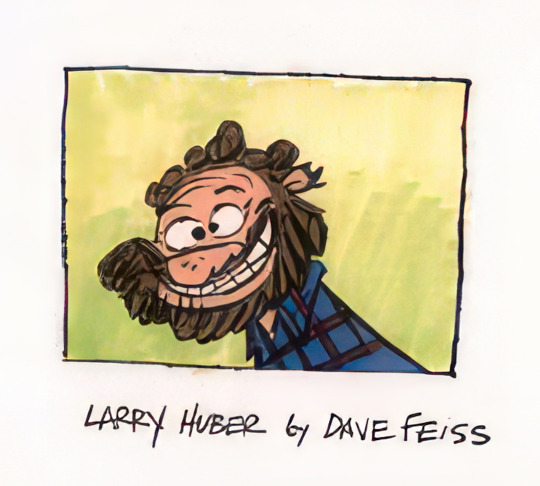
Larry Huber illustration by David Feiss
#Larry Huber#ChalkZone#What A Cartoon#Oh Yeah! Cartoons#Random! Cartoons#GO! Cartoons#Too Cool! Cartoons#mentors#Hanna-Barbera#Frederator#animation#cartoons
6 notes
·
View notes
Photo

Fearless. Three stories.
Bob Pittman was my boss (I wrote about Bob as one of my mentors here), the one who gave me a lifetime career in television, when I was positive I was going to be a record producer. Like great bosses can sometimes do, he drove me nuts on more than one occasion (God knows how many times I annoyed him!), but more often than not gave me the rope to hang myself (thanks Bob!). But over the years I watched him succeed over and over and I finally have had enough distance to see...
...that Bob is fearless. A fearless competitor, fearless leader, fearless mentor, probably a fearless flyer. It’s one of the many qualities of Bob’s that’s brought him from radio and MTV to the heights of media.
I had a first hand look on this numerous times, with Bob as a boss, then a client, and finally as a friend. Here are three stories that not only have stuck with me for the past 40 years but have affected my own behavior, but personal and professional ever since.
1.
Very early on at MTV Networks, we had a management offsite meeting in Montauk. I’m not much of a joiner and not a drinker, but one night I found myself in a packed car of party co-workers; seven folks in a car meant for five. I was stuffed in the back with Bob and someone sprawled across our laps.
You have to know how isolated Montauk is, and at night there are no streetlights, and here we were barreling through the darkest of roads. Suddenly, Bob leaned forward and put his hands over the driver’s eyes.
“We did this all the time at home in Mississippi. No one ever got hurt!”
I wasn’t so sure his luck was going to hold.
The woman on my lap leaned in close and said, “That’s what I like about Bob. He’s fearless.”
.....
2.
Bob was 25, I was 27, he was my boss as the head programmer at The Movie Channel, a start up, early cable channel owned by Warner Amex Satellite Entertainment (WASEC), a joint venture between two huge corporations, Warner Communications and American Express. Every expense was heavily scrutinized for efficiency and effectiveness, and my first production assistant was brought on as a freelancer only. He was creative, smart and funny, if a little disorganized.
A few months in he up and quit. “I’ve got an eye disease, I’ll be legally blind in a few months. I’m going to go live with my parents and I’ve sold my comics.” He’d been collecting since he was in grade school.
It came out that his vision was kind of like being underwater with eyes open and the degeneration would stop at a certain point. Reading was possible but only with a machine that could take books and papers and blow the type up by several inches. Insurance would pay for it, but he was a freelancer with no coverage.
“Well, I’m not going to let you quit. Your problem isn’t your vision, you’re just a little messy and undisciplined. Let's see what I can do.”
Back in the day, corporate health insurance wasn’t as computerized and organized –or quite as necessary– as it is now and maybe I could pull a weasel move and back date him as an employee for health coverage and get him his machine. I didn’t know Bob all that well, we’d met through my first media mentor, but he seemed like a real corporate type –at least compared to me– and he’d have to clear it.
I held my breath and launched into the PA’s issue.
“It’s simple, backdate his employment, get him insurance.”
The PA stayed, got his gizmo, and legally blind or not went on to become the company’s worldwide creative director for sister channel Nickelodeon.
Bob wasn’t a corporate weasel after all, he was a fearless warrior for his people.

Bob in MTV days, with a frame from Silver Cloud Productions’ “Dot to Dot”
.....
3.
A month into my gig at The Movie Channel, Bob announced The Music Channel and asked me to lead the creative efforts of the channel-to-be. He had a clear vision of a format that would be, exclusively, music videos 24 hours a day, interrupted occasionally by “VJs.”
“So,” I asked Bob, “what else will be in the clock? Jingles, like Top 40 radio?” I hoped not, but I couldn’t really picture anything else.
“No! Are you kidding? NO!!! We’ll do animated logos.” Remember, we didn’t have a name no less a logo.
He could tell I was a little confused. “What?”
“Imagine this.” He was already sounded triumphant. “There’s an animated cow grazing around. All of sudden! An axe comes of of nowhere and cuts off its head. The head falls to the ground, veins spurting blood. The cow vomits! And in the vomit is our logo!!!”
Wow, I thought. Bob will let me do whatever I want!
Bob’s creative fearlessness was the beginning of a change in television that would reverberate for decades.
By the way, we’d never produce the vomiting cow, but...
vimeo
"Bessie the Cow" by Tom Pomposello from fredseibert on Vimeo.
#Bob Pittman#mentors#MTV#MTV Networks#The Movie Channel#WASEC#Warner Amex Satellite Entertainment Company
2 notes
·
View notes
Photo

Kevin Kolde.
Kevin Kolde has an incredible history in the cartoon business. In fact, he’s changed cartoons on television and streaming forever. But it’s only been in the last few years he’s stepped out of the shadows with his triumphant production of Castlevania on Netflix. He started several years before at Frederator Studios, but hey, I’m proud that we’ve worked together for almost two decades.
And before I say anything else let my immense gratitude to Kevin, along with Eric Homan, for running Frederator Studios over the years when I was involved in a series of ventures that may have complemented the studio, but definitely distracted me more than they should have.

Kevin and I first met when he was the VP of sales & marketing of a toy and paint company in his home state of Michigan and he’d licensed some original characters from John Kricfalusi, creator of Ren & Stimpy. Kevin knew great talent when he saw it.

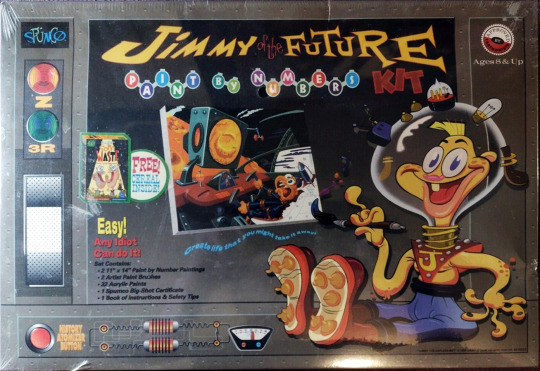
It seemed like minutes later, Kevin moved his family to Burbank and partnered with John to run SPüMCø; he proceeded to learn the cartoon business and became a world class producer. For several years I tried to recruit Kevin over to Frederator, and after overseeing a dozen projects for SPüMCø –including Ren & Stimpy’s Adult Cartoon Party for Spike– he made the move and joined Eric Homan to run our Hollywood office.
There’s too much history with our studio to go into detail, but suffice it to say that Kevin and Eric were an unbeatable combination. Sure Eric ‘developed’ and Kevin ‘produced,’ but honestly, it was a total collaboration. There aren’t many producers that have the creative insight that Kevin has, and putting it together with an almost flawless approach to the actual “making” of cartoons, Kevin managed the deals, the budgets, voice casting and acting, and animation of hundreds of episodes Frederator’s creators brought to life.
I can be a pretty lazy producer, more like Tom Sawyer in many ways. If there’s someone else to paint the fence, I’m all for it. But, working with Kevin, as hard as he managed the thousands of details, legal, creative and otherwise, I couldn’t help but becoming more and more cognizant of what actually went into our films. After all, we basically started in the business about the same time, but he was way smarter than I was.
As soon as Kevin came over to Frederator he told me about his personal creative interests, which weren’t really in the wheelhouse I’d imagined for us. I was primarily interested in, and produced, comedy cartoons. Besides cartoons, Kevin was into video games and told me that he thought games were perfectly adaptable for animation. Like many gaming aficionados his disgust of the live action adaptations of the time was total. He’d optioned a couple of properties, and excitedly told me he wanted to hold them out of our deal, especially since one of them was horror, and pretty violent, and outside the lines of Frederator.

Talent is talent and “producing” talent is as valuable of anything else. Basically, I told Kevin that if he was into it, whether or not I understood video games –I don’t– I believed in him and his judgement. If he saw clear to keeping the projects with Frederator, I was in.
Alongside of producing our first series together, Kevin zeroed in on getting Warren Ellis to write his first, fantastic feature screenplay, got James Jean to create some inspirational art, and started bringing the project to possible partners.
Crickets. To make a long story short, for almost 10 years Kevin got the door slammed in his face. But, as they say, he persisted. No one understood what an American animated horror movie could be, how it could thrive in the marketplace. Still, he persisted. Finally the pieces came together. Kevin connected with the spectacular creative team at Powerhouse Animation in Austin, Texas, who understood anime production better than anyone else in the United States. Netflix, in it’s most experimental moment at the beginning of their streaming adventure, understood Kevin’s adaptation of Warren’s screenplay into a mini-series. The rest is history.
Kevin changed his life based on his passions. He took his production skills and stepped up to becoming a world class showrunner, a rarity for a non-writer. Other people tried to take the credit, but honestly, it was all Kevin all the time. He oversaw every detail of every frame of film for Castlevania. He’s announced a second series in the Castlevania “universe,” set in 1792 France against the backdrop of the French Revolution. Whew.

OK, I’ve completely skipped over Kevin’s critical role in all of our 2000′s shorts shows, and his collaboration with Eric Homan in getting Pendleton Ward’s Adventure Time/Bravest Warriors and Natasha Allegri’s Bee and PuppyCat (and sure, there are many more) made and placed. But, suffice it to say, it would have been hard to get much done at Frederator without Kevin.

What a star. As ever, how lucky am I to work with someone as wonderful as Kevin Kolde?
I’ve posted often about my mentors, the people I’ve learned the most from. And I’ve noted how often how many of them beg to differ as to whether or not I should credit them as such. So, I’ve calmed down in my titling. But still…
#Kevin Kolde#mentorship#cartoons#Frederator#Frederator Studios#Castlevania#Netflix#Bee and PuppyCat#mentors#Adventure Time
2 notes
·
View notes
Photo

Illustration of Eric Homan + Fred Seibert by Natasha Allegri.
Eric Homan.
Soon after I got to Hanna-Barbera Cartoons, my Fred/Alan colleague, Tom Barreca, joined up, running the Enterprises group (he developed our characters into award winning partnerships), and he introduced me to a recent hire in his group, Eric Homan.
And a wonderful 30+ year cartoon relationship began.
"The World of Hanna-Barbera" edited by Eric Homan
Eric and I played a lot of roles together, from animation art to Frederator-on-the-internet (he critical to the founding of Channel Frederator and Cartoon Hangover). But, really it’s the cartoons.

Eric is most known and successful because of his development of the entire Frederator slate from 2004 on, starting with the Nicktoons Film Festival, and on through Wow! Wow! Wubbzy!, Random! Cartoons, Too Cool! Cartoons, and GO! Cartoons. And, not for nothing, Eric and Kevin Kolde double handedly ran Frederator Studios when I lived on the East coast and was starting up our YouTube channels, among other things.
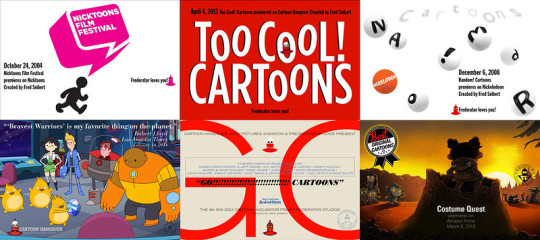
But he’s rightly most revered for his roles in Pendleton Ward’s Adventure Time and Natasha Allegri’s Bee and PuppyCat. Networks and streamers like Netflix, Nickelodeon, Cartoon Network, Max, Amazon Prime, Cartoon Hangover, and Channel Frederator owe a lot to Eric Homan.
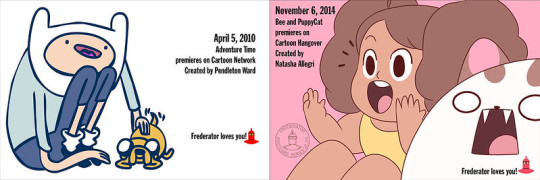
(And lest you be skeptical about the work that goes into the “development” of cartoons led by such stellar creators, remember that Eric personally sifted through at least 5000 shorts pitches for our 60+ creator led shorts and honed in on the creators that created the series that spun off. I might have founded the studio, but Eric carried the weight.)
By the way, I’d be remiss if I didn’t tell you the crucial role Mr. Homan played in Adventure Time’s life. As part of his constant search for special talent at Frederator, Eric visited end-of-semester student film showcases at CalArts outside of Los Angeles. In the early aughts, he caught a film of junior Pen Ward’s and introduced himself; the next year, they bumped into each other again and a month after graduation, Pen pitched his AT board. A few weeks later, Pen pitched me.
And I turned it down.
At the end of a long day of not-so-great presentations, Eric, Kevin Kolde and I retreated to my office to review. I made the classic executive mistake of thinking I knew what was right.
“He doesn’t have any professional experience. His drawing is primitive. We don’t make student films here.“
Eric and Kevin were surprised, they loved Pen and his idea. They pushed. I pushed back. And then Eric delivered the zinger.
“You try to be polite, you usually have a fake laugh in our pitches. But you actually laughed with Adventure Time.”
Busted. Eric knew me better than I did, and he knew a great piece of work when he saw it. The rest is history.
There are more stories that I can tell you. It comes down to the fact that’s Eric’s role in the modern history in cartoons is unique. Bottom line, it’s been an honor to work with Eric Homan, and not for nothing, we continue to collaborate in the wide world of cartoons. Thanks bud.
PS: Eric doesn’t love having his picture taken, hence Natasha’s illustration up above. But, I thought I’d share this snap of Eric, Pen Ward and me from 2008.

I’ve posted often about my mentors, the people I’ve learned the most from. And I’ve noted how often how many of them beg to differ as to whether or not I should credit them as such. So, I’ve calmed down in my titling. But still...
#Eric Homan#mentors#cartoons#animation#Hanna-Barbera#Frederator#Frederator studios#Adventure Time#Bee and PuppyCat#Wow! Wow! Wubbzy!#random! cartoons#Too Cool! Cartoons#GO! Cartoons#Netflix#Nickelodeon#Cartoon Network#Max#HBO Max#Amazon Prime#Cartoon Hangover#Channel Frederator
3 notes
·
View notes
Photo
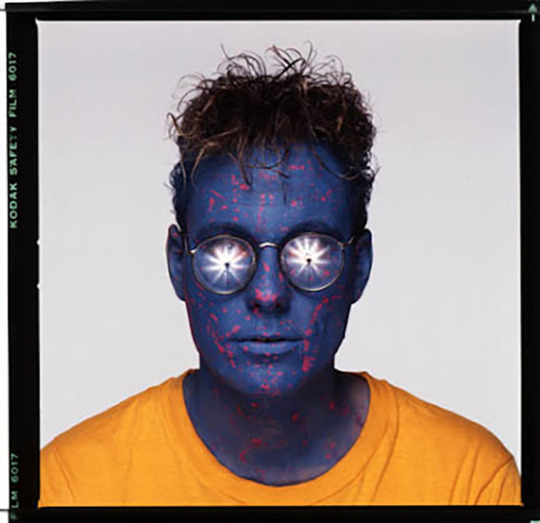
Frank Olinsky.
Frank Olinsky was the first artist I knew. Check that. Frank was the first person that made me aware that there was such a thing as an artist. He was brilliant even then, and remains so today. He’s inspired me since we met when I was four years old (Frank was 5!), and I’m proud to still be his friend, almost 70 years later.
In a prophecy to my primary occupation, when I was in the 4th grade and The Flintstones hit the airwaves like a ton of quarry bricks 20 times more powerful than The Simpsons, Frank started making hand drawn Fred Flintstone sweatshirts. It hadn’t dawned on me that actual humans drew the characters, not some mystical, unknowable process, and it wouldn’t be the last time that Frank taught me something.

A suburban picnic, Halesite, Long Island, NY circa 1956:
Susan Olinsky, Frank, Fred Seibert, Elena Seibert
As we got older and The Beatles knocked out our obsessions with baseball cards, being a year ahead of me, Frank’s the guy who turned me on to all the newest pop music of the day. The Monkees, The Cyrkle, The Who, Jeff Beck, Frank Zappa and the Mothers of Invention, you name it, Frank was always there first and generously shared the information, and music!, with me.
So, it was logical that I would turn to him to illustrate and design for my first company, and other music projects I was associated with.
And then again, when I was fortunate enough to have the responsibility to create the look of the fledging MTV, Frank’s fandom and talent came into play again. By then he was part of a tiny design collective with enormous ideas, Manhattan Design, with two partners, Patti Rogoff and Pat Gorman, and together they toiled through hundreds of approaches of logo marks to present to my partner, Alan Goodman, and me. At the last second, the weasels in the sales department almost killed the most famous design in modern media, but, we turned the tables and mowed ‘em down.
The original vision of MTV is almost gone, but the original approach to the graphics and promos is the most fondly remembered and honored vestige of cable television we have today in 2023.
Frank’s first love has always been pop music, and after the visibility of his MTV work he became one of the leading LP cover designers. And he does books, still illustrates, he teaches at Parsons, and he’s written a few books along the way.
Not for nothing, Frank Olinsky has continued to create valuable stuff for projects I’ve been involved with over the decades.
But, more importantly, we’ve been life long friends.
How lucky am I?!!
I love you Frank.

I’ve taken a lot of flack from some of the friends I’ve posted about as mentors. Frank deserves to be at the top of that list, but I’m reformed. Now, I just write about important influences in my life.
#Frank Olinksy#mentors#illustration#design#graphic design#Oblivion Records#MTV#Next New Networks#Frederator#album covers
1 note
·
View note
Photo

From Shoutout Arizona
January 16, 2023
Meet Fred Seibert | Serial entrepreneur who produces cartoons and creates media companies.
We had the good fortune of connecting with Fred Seibert and we’ve shared our conversation below.
Hi Fred, what was your thought process behind starting your own business?
Hah! None. At least, not consciously. I wanted to make records and didn’t know how (or was scared) to contact “real” record companies. So my buddies and I started Oblivion Records ( http://bit.ly/3FlrFFm )
Working in the corporate gold mines of commercial radio and then as a co-founder of MTV wore me down. So my partner Alan Goodman and I started the world’s first media branding company figuring it might be more invigorating. https://fredalan.org/post/165050268321/the-fredalan-chronology-we-were-in-business-for
I went back in the grind to resurrect the famous Hanna-Barbera Cartoons studio when Ted Turner bought it. When he decided to sell his entire company (CNN, TBS, TNT, Cartoon Network) to Time Warner, I figured that five years of working for a lunatic, brilliant entrepreneur was good enough, so I started Frederator, my own cartoon studio. I stupidly went back to the salt mines of MTV to run their online businesses, quit after a year (I was a really bad employee) and add an online video component to Frederator.
Channel Frederator did so well that venture capital approached us and with a few co-founders I put together Next New Networks, the company that, for better or worse, started the multi-channel networks (MCN) on YouTube. Who could resist free (sure!) money? YouTube bought our company.
20 years in Frederator went through a number of changes, a lot of hits, online and in traditional media, and ended up as a small public company.
Yuck. I quit and started FredFilms in Los Angeles.
Alright, so let’s move onto what keeps you busy professionally?
I come from a family of scientists and decided at six that I’d be a chemist. After a school life as a math/science kid I went to college to study chemistry. A few weeks in I turned to my Zoology lab mate. “I like the Beatles more than this,” and marched into my college radio station and never left. No surprise, I never graduated.
After a lifetime of playing music I went to the other side of the glass in a recording studio to produce records (records and pop music were the lingua franca of my generation). After spending years figuring it out, a wise, famous recording engineer pointed out to me that staying focused on talent was a super power. That’s what I’ve done for 50 years.
Whether it’s in music, television, cartoons or technology, I’ve staying focused on identifying superior, ambitious and friendly talent.
I continue to be a fan, a professional fan, who tries to help that talent.
Website: https://www.fredfilms.com … https://fredseibert.com … https://oblivionrecords.co … https://fredalan.org
Instagram: https://www.instagram.com/fredseibert
Linkedin: https://www.linkedin.com/in/fseibert/
2 notes
·
View notes